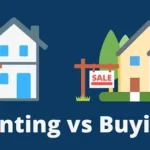Real estate is often seen as one of the most reliable ways to build long-term wealth. Traditionally, this meant buying property—like rental homes or commercial buildings—but what if you want to invest in real estate without owning physical property?
Good news: it’s possible.
In fact, investing in real estate without being a landlord or buying actual buildings is now easier than ever. This guide will walk you through the top strategies to get started.
Table of Contents
- Why Consider Real Estate Without Buying Property?
- Real Estate Investment Trusts (REITs)
- Real Estate Crowdfunding Platforms
- Real Estate Mutual Funds and ETFs
- Private Real Estate Funds
- Real Estate Notes and Debt Investments
- Tokenized Real Estate and Blockchain
- Real Estate-Related Stocks
- Pros and Cons of Non-Ownership Real Estate Investing
- Final Thoughts: Is Real Estate Without Property Right for You?
1. Why Consider Real Estate Without Buying Property?
Buying physical real estate often requires:
- A large down payment
- Ongoing maintenance
- Property management
- Liability risks
By contrast, alternative real estate investments offer:
- Lower entry costs
- Greater liquidity
- Less stress
- Passive income potential
For beginners, busy professionals, or those seeking diversified passive income, non-ownership real estate investments make a lot of sense.
2. Real Estate Investment Trusts (REITs)
What Are REITs?
REITs (Real Estate Investment Trusts) are companies that own or finance income-producing real estate. They trade on major stock exchanges, just like stocks.
Types of REITs
- Equity REITs: Own and manage properties
- Mortgage REITs: Invest in mortgages and mortgage-backed securities
- Hybrid REITs: Combine both
Benefits of REITs
- Low barrier to entry (as little as $10–$100)
- High dividend yields
- Easy to buy and sell
- Diversification across multiple properties
Popular REIT Examples
- Public Storage (PSA)
- Realty Income Corp (O)
- Prologis (PLD)
SEO Tip: “How to invest in REITs” is a high-search-volume keyword, so this section can target that query directly.
3. Real Estate Crowdfunding Platforms
What Is Real Estate Crowdfunding?
This method allows you to invest small amounts into real estate projects, usually through online platforms. It pools funds from multiple investors to buy or develop properties.
Top Crowdfunding Platforms
- Fundrise
- RealtyMogul
- CrowdStreet
- DiversyFund
Investment Types Offered
- Commercial real estate
- Multifamily housing
- New developments
- Income-producing properties
Pros
- Low minimum investments (often $10–$1,000)
- Passive income through dividends or interest
- Access to institutional-level deals
Cons
- Less liquidity
- Platform risk
- Investment horizon of 3–7 years
4. Real Estate Mutual Funds and ETFs
If you prefer indirect exposure to real estate, consider mutual funds and real estate ETFs (Exchange-Traded Funds).
What They Invest In
- REITs
- Real estate operating companies
- Real estate service providers
Popular Real Estate ETFs
- VNQ – Vanguard Real Estate ETF
- SCHH – Schwab U.S. REIT ETF
- XLRE – Real Estate Select Sector SPDR Fund
Benefits
- Professional management
- Broad market exposure
- Low expense ratios
- Highly liquid
This is a great option for those already comfortable investing in the stock market.
5. Private Real Estate Funds
What Are They?
Private real estate funds are pooled investments managed by firms that buy, develop, or manage real estate projects. These are usually open to accredited investors only.
How They Work
- You commit capital for a fixed period (often 5–10 years)
- Fund managers deploy that capital into real estate deals
- Returns are distributed over time via dividends or asset sales
Benefits
- Potential for higher returns
- Access to large-scale projects
- Professional management
Drawbacks
- High minimum investment (often $50,000+)
- Illiquidity
- Higher risk
6. Real Estate Notes and Debt Investments
If you’d rather lend money instead of owning property, you can invest in real estate notes or debt instruments.
What Are Real Estate Notes?
These are loans made to real estate investors, secured by a property. You act as the lender and earn interest over time.
Types
- First-lien notes
- Second-lien notes
- Non-performing notes
Where to Find Them
- Peer-to-peer lending platforms
- Hard money lenders
- Real estate crowdfunding portals
Pros
- Predictable income
- Less exposure to property market fluctuations
- Shorter terms
Cons
- Borrower default risk
- Complex legal frameworks
7. Tokenized Real Estate and Blockchain
A newer method is to invest in fractional real estate ownership using blockchain technology.
What Is Tokenized Real Estate?
Property shares are turned into digital tokens that you can buy and sell. It works similarly to crowdfunding but with blockchain integration.
Platforms Offering Tokenized Real Estate
- RealT
- Lofty
- Arrived Homes
Benefits
- Low entry costs (as little as $50)
- Fractional ownership
- Fast transactions
This method is still emerging, but it offers exciting potential for the future of real estate investing.
8. Real Estate-Related Stocks
You don’t have to invest in actual properties to benefit from the real estate sector. Some publicly traded companies provide exposure to the housing market.
Examples
- Homebuilders – D.R. Horton (DHI), Lennar Corp (LEN)
- Construction firms – Caterpillar (CAT)
- Property management – CBRE Group (CBRE)
- Real estate tech – Zillow (Z), Redfin (RDFN)
These stocks can ride the same economic trends that affect real estate values, offering capital appreciation without ownership.
9. Pros and Cons of Non-Ownership Real Estate Investing
✅ Pros
- Low capital requirement
- Passive income
- Liquidity (especially with REITs and ETFs)
- No landlord headaches
- Diversified exposure
❌ Cons
- Limited control over assets
- Market volatility
- Platform and counterparty risks
- Some options (like crowdfunding) may lack liquidity
Each method has its own risk/return profile, so choose based on your risk tolerance and financial goals.
10. Final Thoughts: Is Real Estate Without Property Right for You?
You don’t need to buy property to reap the benefits of real estate investing. Whether you’re looking for monthly income, portfolio diversification, or long-term capital growth, there’s a method that can align with your strategy.
Best Options for Different Investors:
- Beginners: Start with REITs or ETFs
- Intermediate: Try crowdfunding platforms
- Accredited Investors: Consider private real estate funds or debt notes
- Tech-savvy investors: Explore tokenized real estate
By leveraging these options, you can invest in real estate without owning a single building.
Frequently Asked Questions (FAQs)
Can I invest in real estate with $100?
Yes! REITs, crowdfunding platforms like Fundrise, and tokenized property shares often accept investments as low as $10–$100.
Is real estate crowdfunding safe?
It involves risk, like any investment. Always research the platform, read project details, and diversify to mitigate losses.
How do I avoid being a landlord?
Invest in REITs, real estate mutual funds, or crowdfunding projects where management is handled by professionals.
Are real estate ETFs better than REITs?
They serve similar purposes but differ in composition and risk. ETFs offer broader diversification, while individual REITs may provide higher yields.
🎁 Want a Surprise?
Click here to get redirected to a random post


